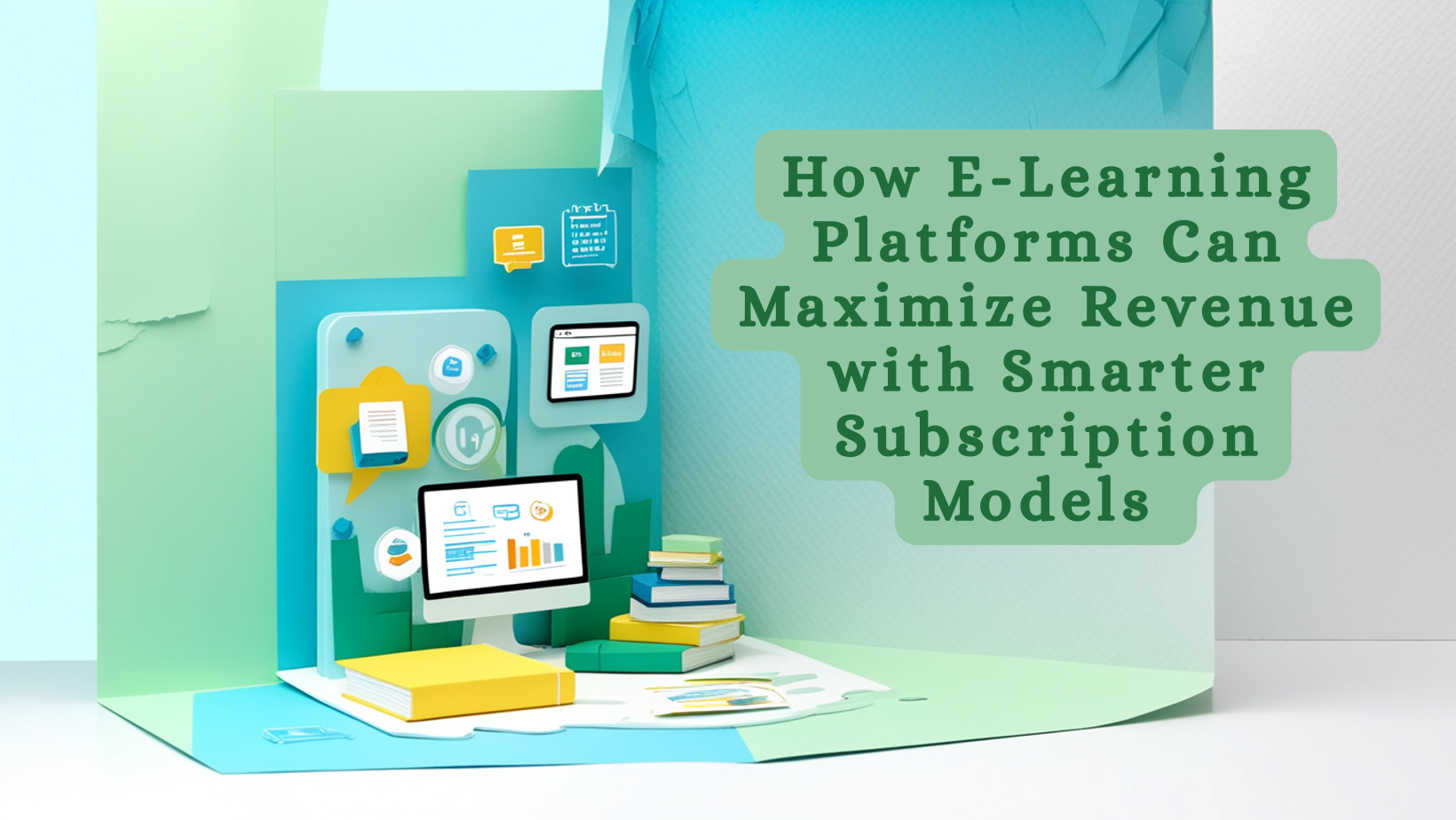
The global e-learning market is thriving. Yet, sustained growth isn’t just about onboarding new users—it’s about maximizing the lifetime value of every learner while delivering flexible, personalized, and accessible content.
While subscription models have become the industry norm, many platforms leave revenue untapped by clinging to rigid, one-size-fits-all offerings. To thrive in today’s digital learning economy, e-learning providers must adopt smarter, dynamic subscription strategies that align with user behaviour, budget, and professional goals.
This article explores how to evolve your subscription model beyond the basics—and turn it into a powerful engine for profitability, retention, and global impact.
Why Traditional Subscription Models Fall Short
Most platforms rely on simple tiered subscriptions—Basic, Premium, Enterprise. While effective for structuring access, these models often overlook the nuances of global learners:
The Pillars of Smarter Subscription Models
To optimize monetization, platforms must adopt a multi-dimensional pricing strategy that adapts to learner behaviour, perceived value, and delivery costs.
1. Granular Tiering and Feature Bundling
Move beyond generic "more courses" access. Instead, segment your tiers around user intent, support levels, and content depth:
Content-Specific Tiers
Design tiers based on structured learning paths:
Feature-Based Tiers
Differentiate based on support, engagement, and interactivity:
Accreditation & Certification
Offer higher-tier access to officially recognized certificates, digital badges, or partnerships with global universities and professional bodies.
Time-Based Subscriptions
Introduce short-duration "sprint" passes (e.g., 7/14/30-day intensive access) for users who want to complete a course before an interview, project deadline, or academic term.
2. Usage-Based and Credit Systems
Allow learners to pay based on what they consume—ideal for platforms offering advanced, resource-heavy, or modular content.
Credit-Based Access
Let users purchase credits to unlock:
Pay-Per-Course or Module
Blend subscriptions with individual course sales. This attracts learners looking for specific skills without the pressure of a long-term commitment—often a strong gateway to full subscriptions.
Metered Features
Charge by usage for high-cost tools (e.g., cloud-based data environments, 3D rendering tools, or pro licenses embedded within the platform).
3. Hybrid Models for Flexibility
Combine different pricing logics to cater to broader user personas:
Freemium Model with Strategic Upsells
Offer free access to introductory modules, then upsell premium features such as:
Make the value gap between free and paid tiers clear and motivating.
Base Subscription + Add-ons
Let users subscribe to a base plan with optional add-ons like:
Corporate & Team Licensing
Open a B2B revenue stream by offering:
Examples: LinkedIn Learning’s enterprise tier or Coursera for Teams.
4. Dynamic Pricing and Promotional Strategies
Price sensitivity varies across regions, sectors, and user types. Leverage data to adapt pricing dynamically and increase conversions.
Smart Discounts
Referral & Affiliate Programs
Incentivize users and partners to spread the word with rewards, discounts, or bonus content.
Geo-Based Pricing
Adjust pricing by region based on economic indicators or user willingness-to-pay. Examples:
Loyalty Incentives
Reward long-term subscribers with loyalty credits, tier upgrades, or early access to new content.
5. Retention & Lifetime Value Optimization
Reducing churn is as important as acquiring new subscribers. Focus on building long-term learner relationships through proactive support and personalization.
Effective Onboarding
Help users see immediate value through:
Content & Feature Refresh
Keep the platform dynamic:
Behavioural Churn Detection
Use analytics to flag:
Flexible Tier Migration
Let users upgrade or downgrade easily—this encourages them to stay in the system even as their needs change.
Implementing Smarter Models: Operational Considerations
Transitioning to a flexible pricing model requires the right strategy and tools.
Example: Tiering for a Global Coding Platform
Conclusion
The era of rigid e-learning pricing is over. Today’s learners demand choice, flexibility, and measurable value—and they’re willing to pay for it when it’s delivered well.
By embracing smart segmentation, usage-based billing, hybrid offers, dynamic pricing, and retention-first thinking, platforms can move from transactional revenue to predictable, high-LTV growth.
Whether you’re building for individuals, educators, or enterprise teams—align your pricing with your users' learning journeys, and you’ll unlock growth that’s scalable and sustainable.
Ready to Make Your Subscription Strategy Smarter?
At MYFUNDBOX, we help e-learning platforms unlock predictable revenue through flexible subscription management, multi-currency billing, and seamless global payment integration.
From usage-based pricing to personalized tier structures, MYFUNDBOX empowers you to scale faster, retain more learners, and simplify operations.
Explore how MYFUNDBOX can transform your e-learning monetization — Get started here.
We’d love to hear from you!
What strategies have helped your platform increase revenue and learner satisfaction? Share your insights in the comments.
.png)
.png)















